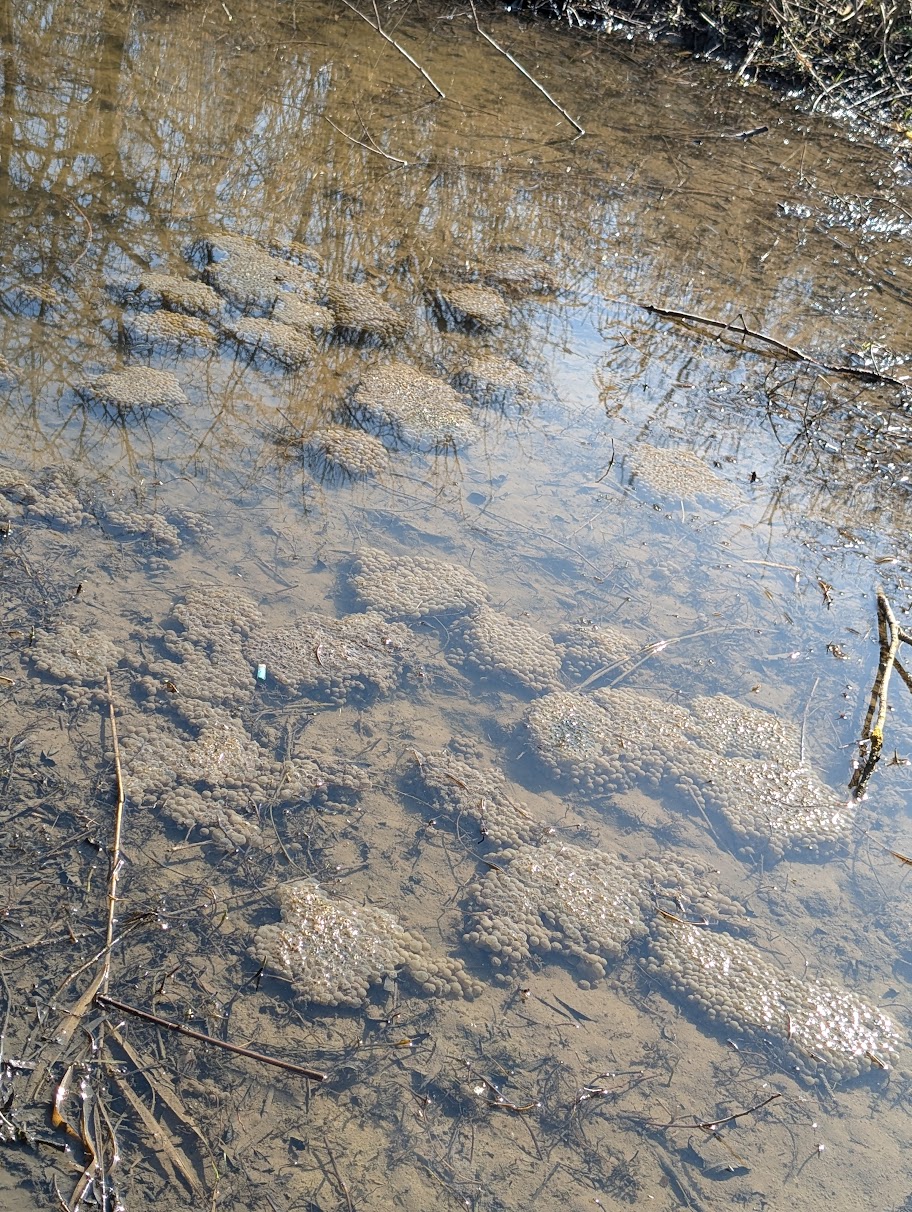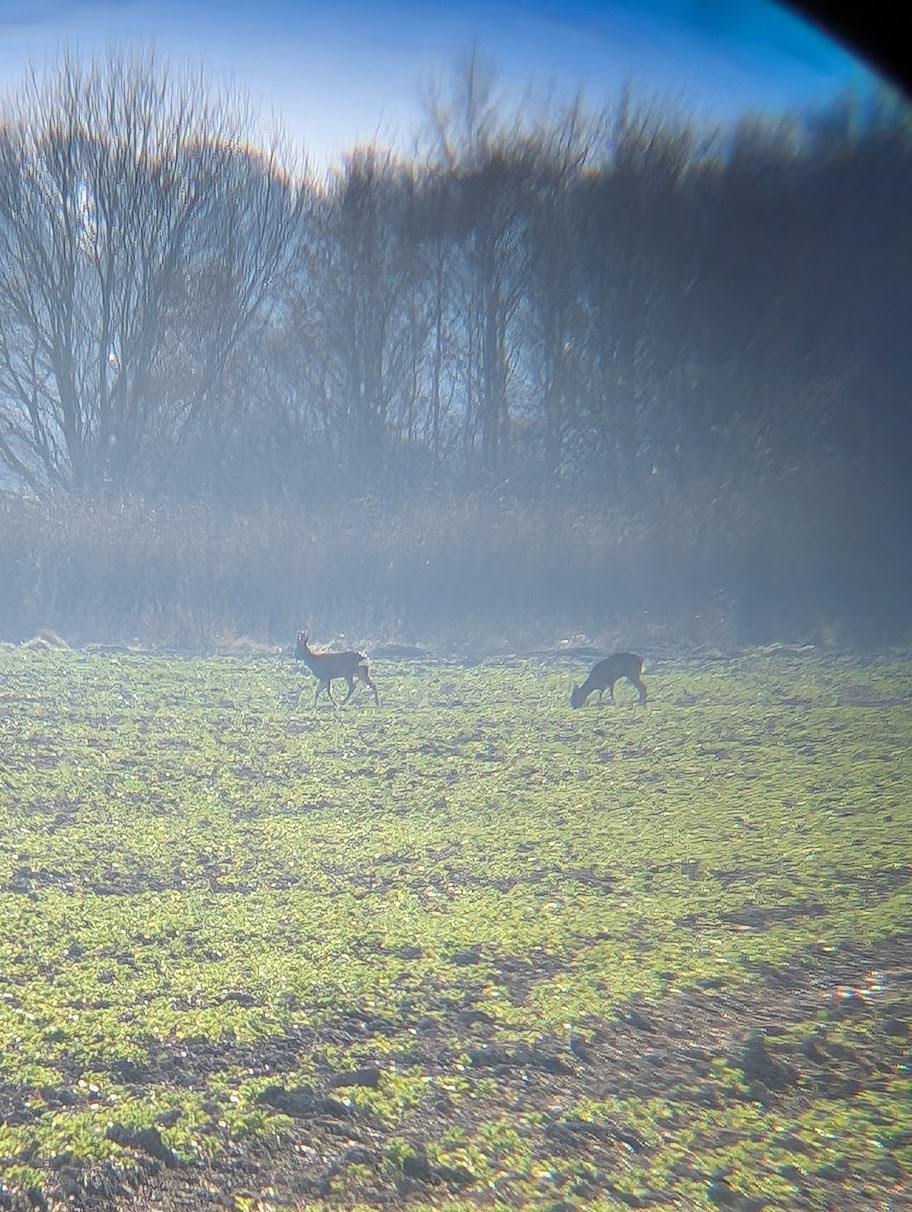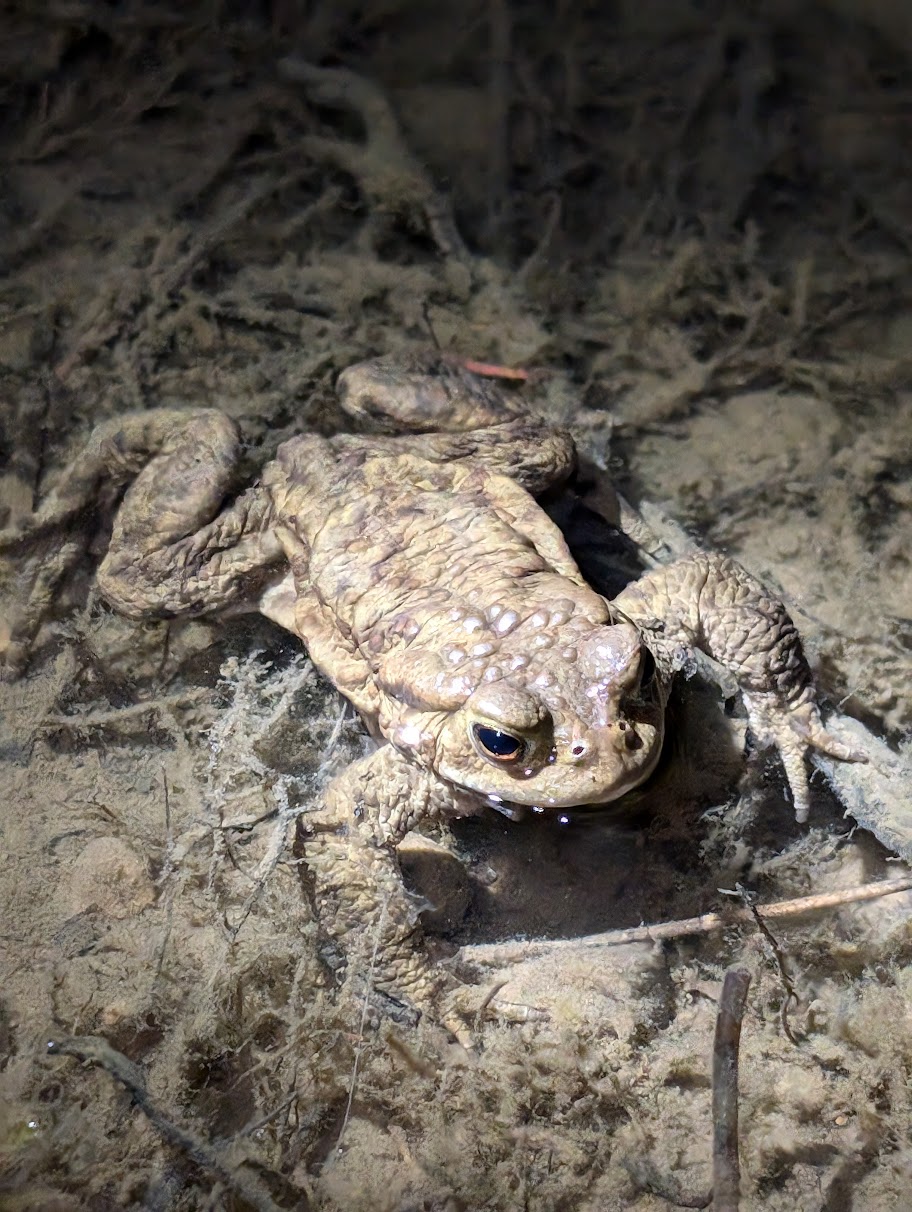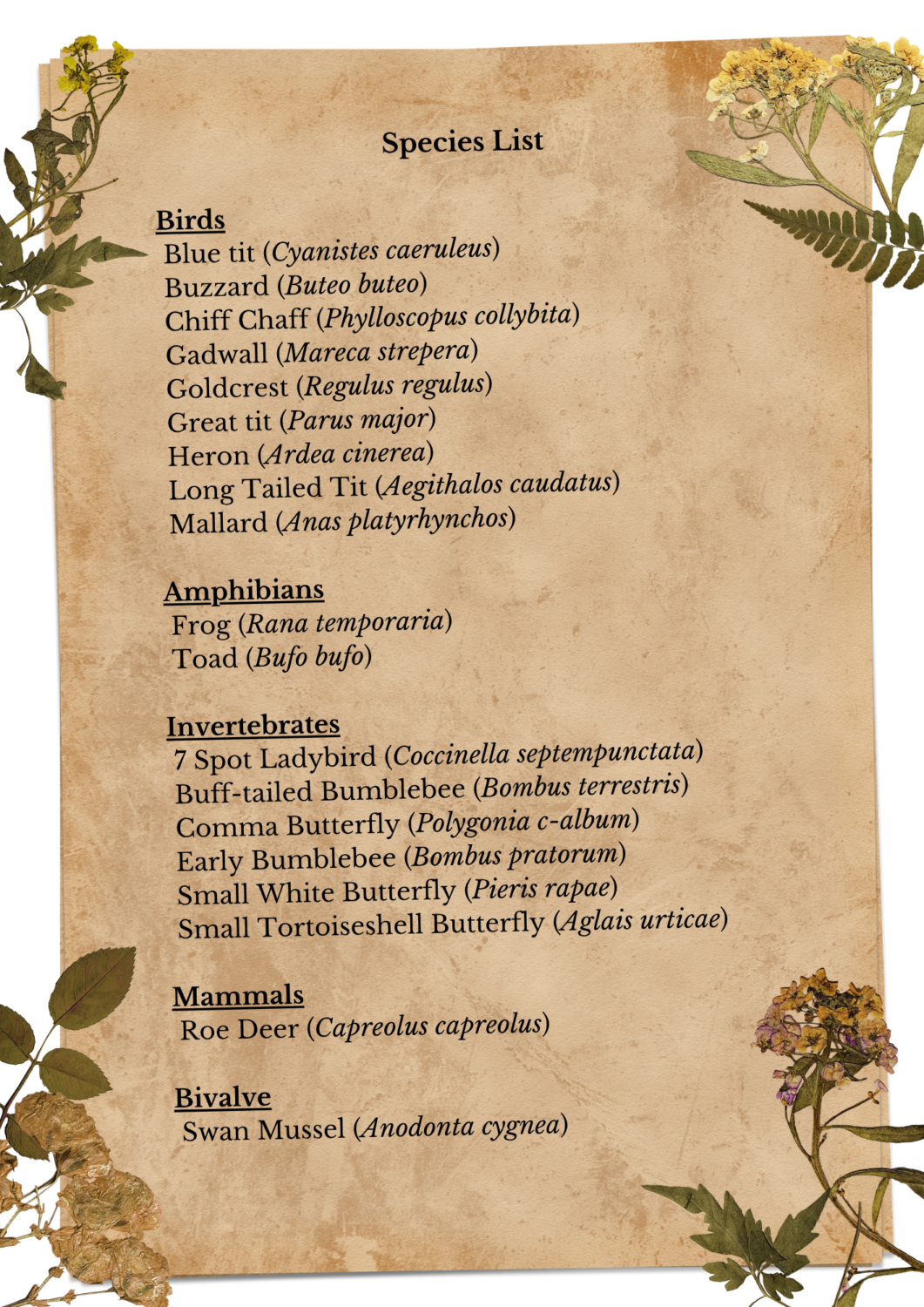It was a lovely sunny spring day when myself, Paul Balmont the Ouse Burn Way Programme Development Manager, and some of the NHSN team headed over to one of my favourite sites along the Ouse Burn – Woolsington Parish Ponds.
I have been lucky enough spend some time here already through putting on amphibian ‘Ponds at Night’ events and bat walks, and have a good relationship with Parish Councillors, John and Joanne, who take a lead on the biodiversity plan and manage the site with a real passion for nature. And, as luck would have it, we ended up bumping into them during our visit!
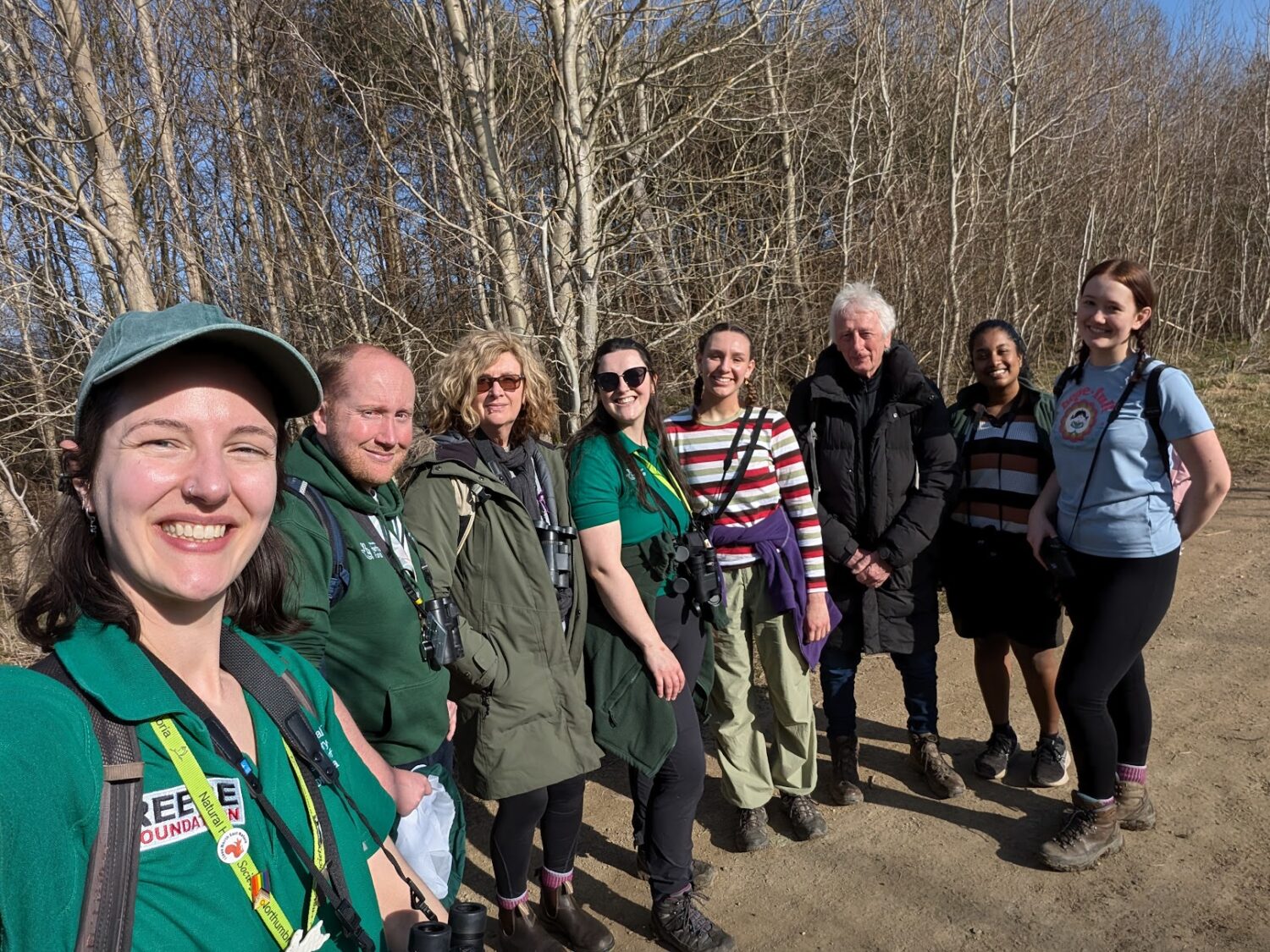
Habitat Restoration and the Battle with Water Soldier
The ponds have undergone an impressive transformation over the past few years. A major milestone was the removal of Water Soldier, an aquatic plant that can become extremely invasive in certain conditions, forming dense mats which choke out sunlight and other native plants – which it certainly did here! Thanks to fantastic efforts from volunteers, the Parish Council, Tyne Rivers Trust, and sponsorship from the Reece foundation, an estimated 500,000 plants were removed from the main pond. The ponds are now thriving, and wildlife is returning in abundance. To read more about this massive achievement, click here.
Plenty of Pollinators
Even before reaching the ponds, the path was buzzing with activity. We spotted both Early Bumblebee and Buff-tailed Bumblebee queens, busy nest-searching. Their distinctive low, zig-zagging flights across the ground are part of the search for suitable nesting sites where she will lay her eggs and establish a new colony.
There were plenty of butterflies out too, including Small Tortoiseshell, Small White, and the striking Comma. The Comma is a favourite of mine – its scalloped wings resemble withered leaves, offering excellent camouflage. Though now a familiar sight, it has not always been this way. Following a severe decline in the mid-1800s which massively contracted its range (possibly linked to reduced hop farming, a key larval foodplant), it has made a remarkable recovery. Since its return to the North East in the 1990s, the Comma has become one of our most widely recorded species, bucking the trend of declining butterfly numbers.
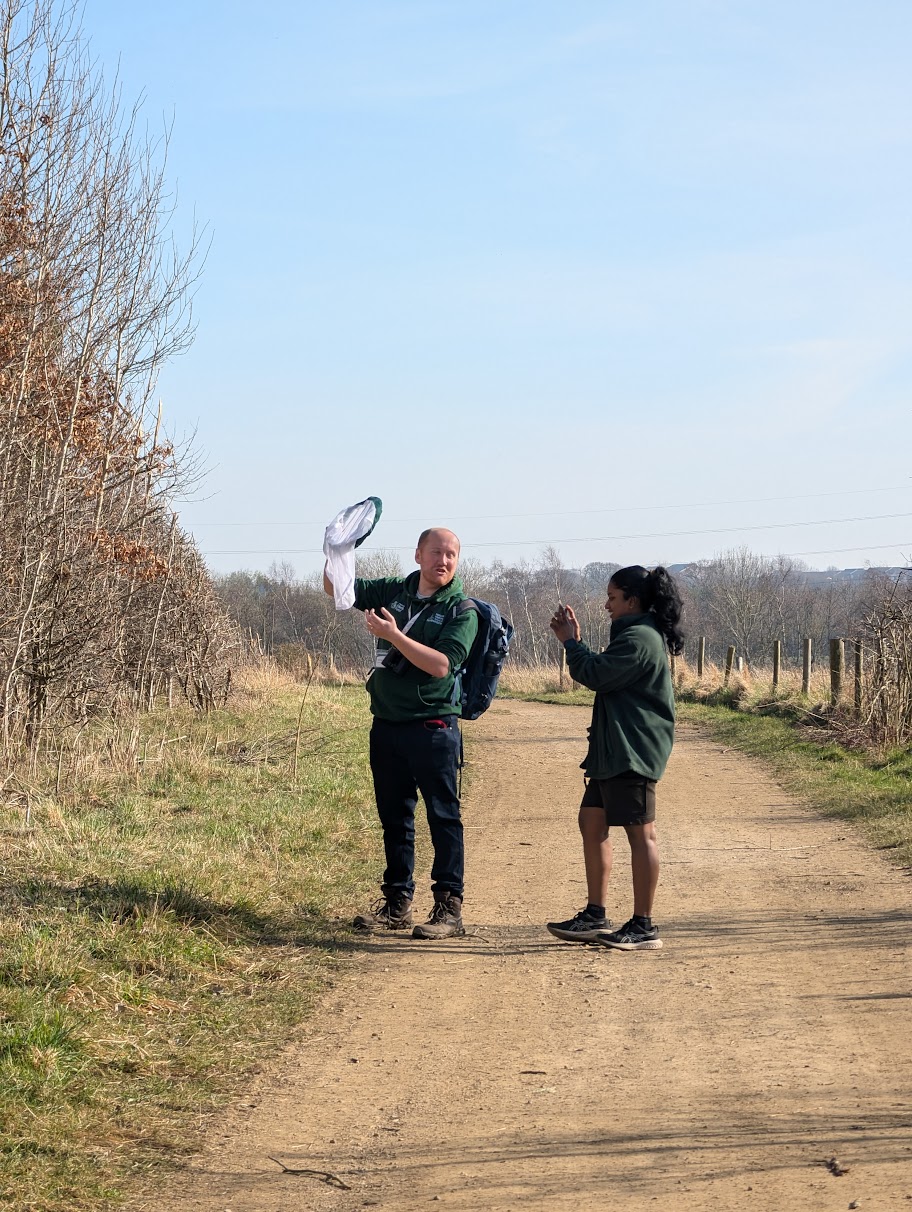
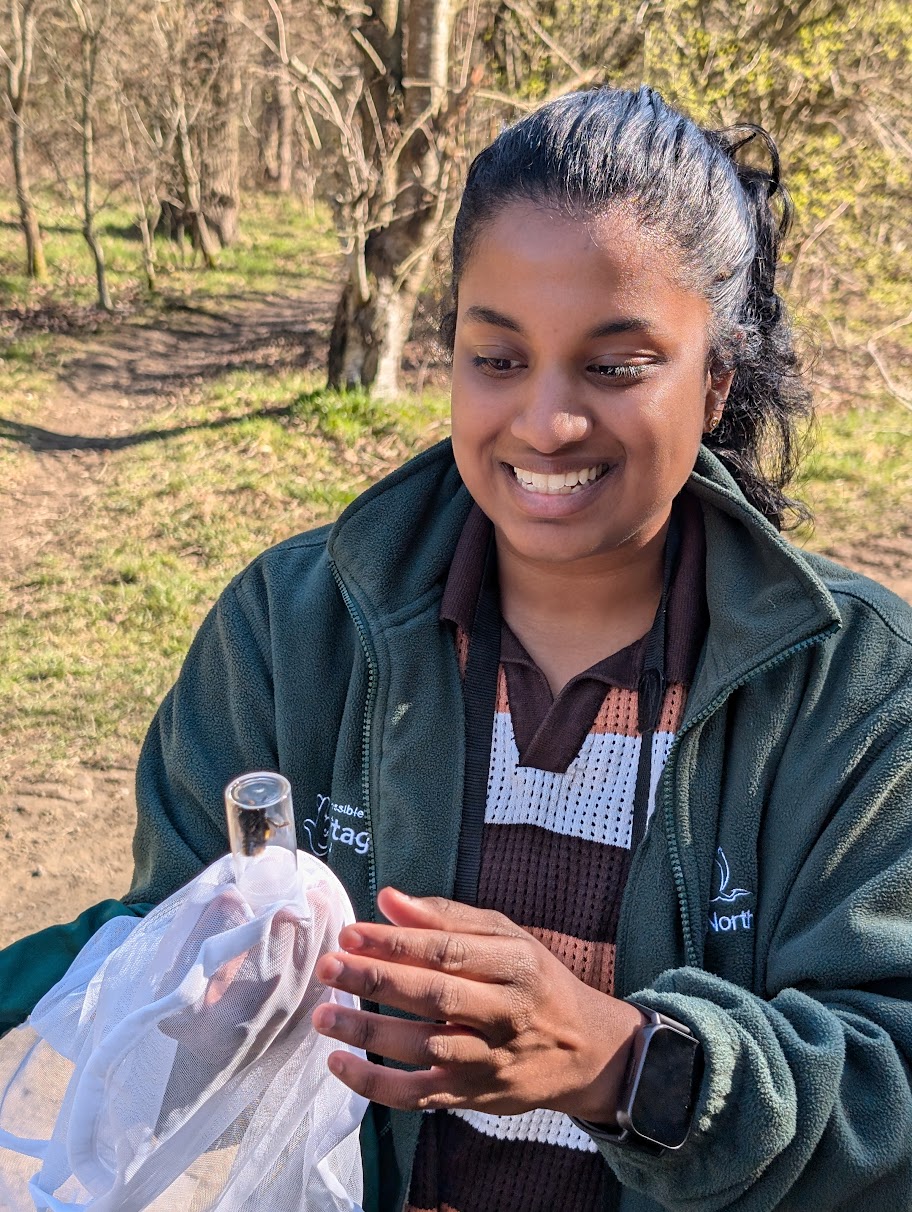
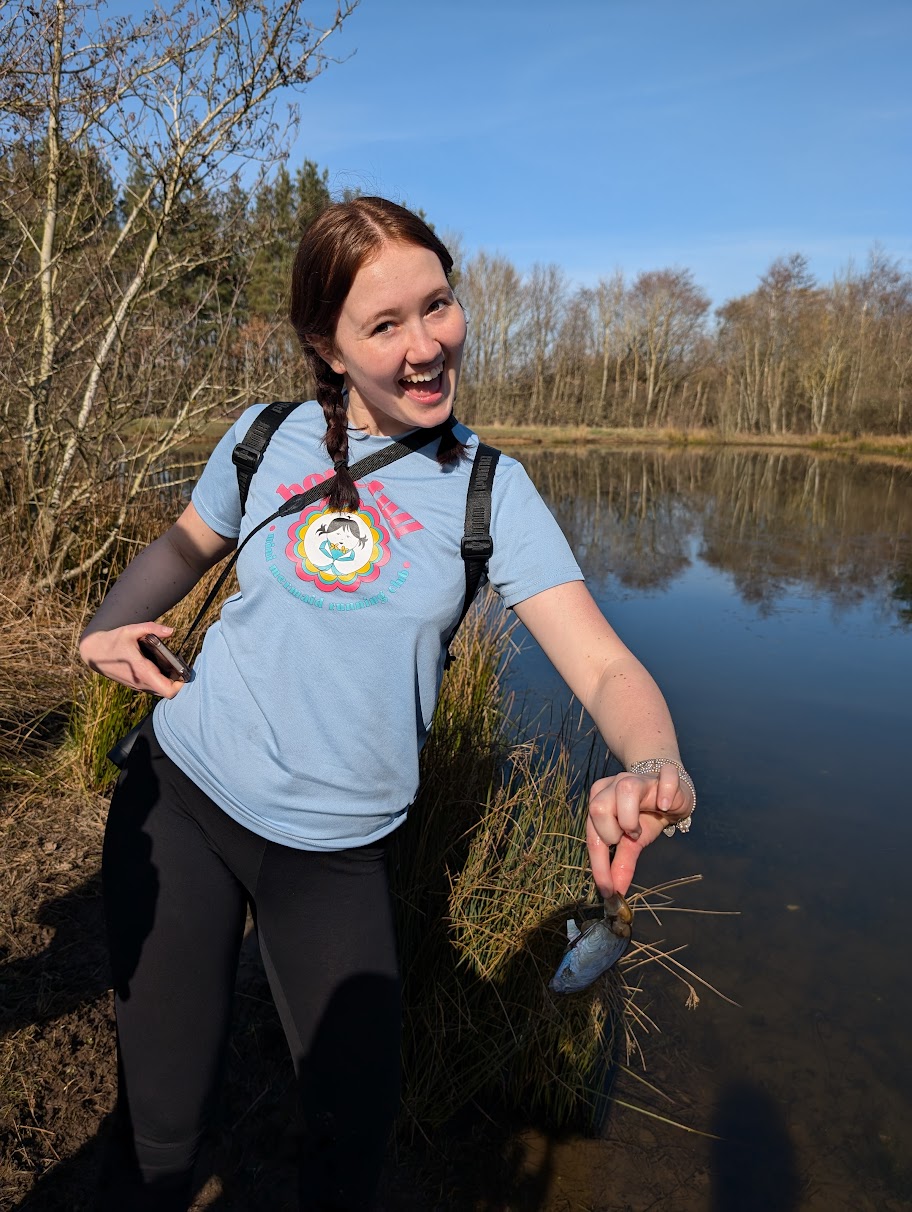
Signs of Spring
As we finally reached the ponds, I was delighted to find what I had hoped for – plenty of Frogspawn! Frogspawn typically appears in clumps, whereas Toadspawn is laid in long strings. I was returning that evening to lead a ‘Ponds by Night: Amphibian Adventures’ session so this evidence of breeding was really encouraging.
Peering into the shallows, we also spotted the empty shells of Swan Mussels, a native species that lives buried in the soft mud of still or slow-moving water. Though often overlooked, these large freshwater mussels play an important role in filtering the water and supporting pond health.
As we turned to head back, a special moment rounded off our visit: two Roe Deer foraging in a nearby arable field. It was a lovely visual reminder that wildlife doesn’t just exist in protected reserves or deep woodland – it’s all around us, in the suburbs, tucked into the fringes of farmland, and blue-green corridors like the Ouse Burn Way.
To read more about the work being done as part of the Ouse Burn Way, please click here.
